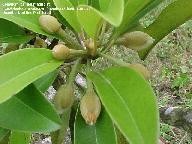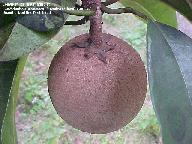 |
Charles Zidar
ANCIENT MAYA BOTANICAL RESEARCH |
|
| Family: | Moraceae | | Genus: | Brosimum | | Species: | alicastrum | | Authority: | Sw. | | Common Name: | ramon, breadnut, chakaj | | Maya Name: | capomo, macica, ox, masicaran, ramon blanco, ramon rosa, red breadfruit, ujushte or chak oox | | Maya Plant Use: | Food, medicine, construction and animal forage.
Famine food | | Botanical Significance: | Puleston before his death argued that the ancient Maya were less dependent on corn that most Maya scholars had thought. He claims that the ancient Maya were dependent on the ramón tree or breadnut (Brosimum alicastrum). He had found that a surprising number of these trees could be found around many of the villages of the ancient Maya. Puleston notes the following: 1) Ramón trees were abundant and close to sites. 2) Ramón seeds were an edible staple. 3) Ramón seeds were storable and had longevity (Flannery 1982 p. 358). Puleston states that ramón trees can produce five times as much food as corn given the same area (Flannery 1982 p. 361). Ramón seeds are also comparable to the nutrition in corn in respect to iron, calcium, protein, niacin, vitamin B2, and vitamin A. The protein of ramón is of a higher quality than corn with greater levels of amino acids such as valine, arginine, tryptophane, and lysine. The author also states that fewer man-hours are needed to produce the same amount of ramón seeds (over corn), 60-95 verses 2,000-3,000 (per 455 kg). Land clearing, weeding, timing (planting/harvesting), and weather are hurdles greatly reduced with the use of ramón trees.
| | Notes: | Syn: B. terrabanum Pitier and B. gentlei Lundell | | Photos: | Click on an image below for high resolution comparison. |
| |





